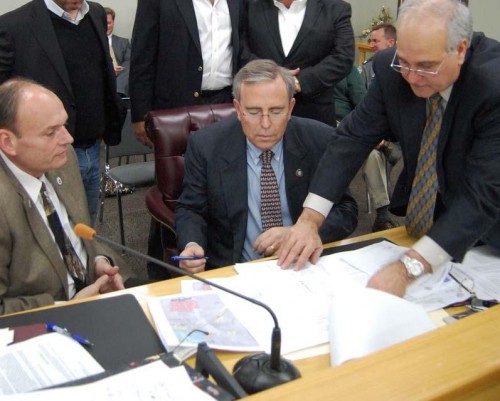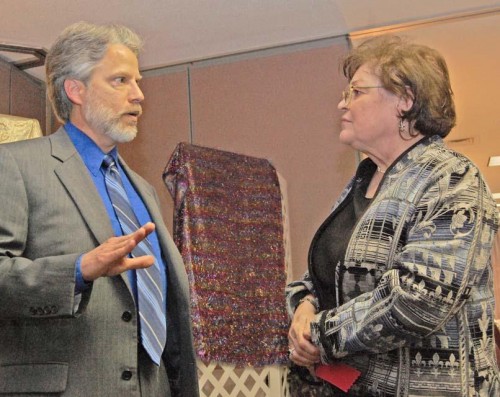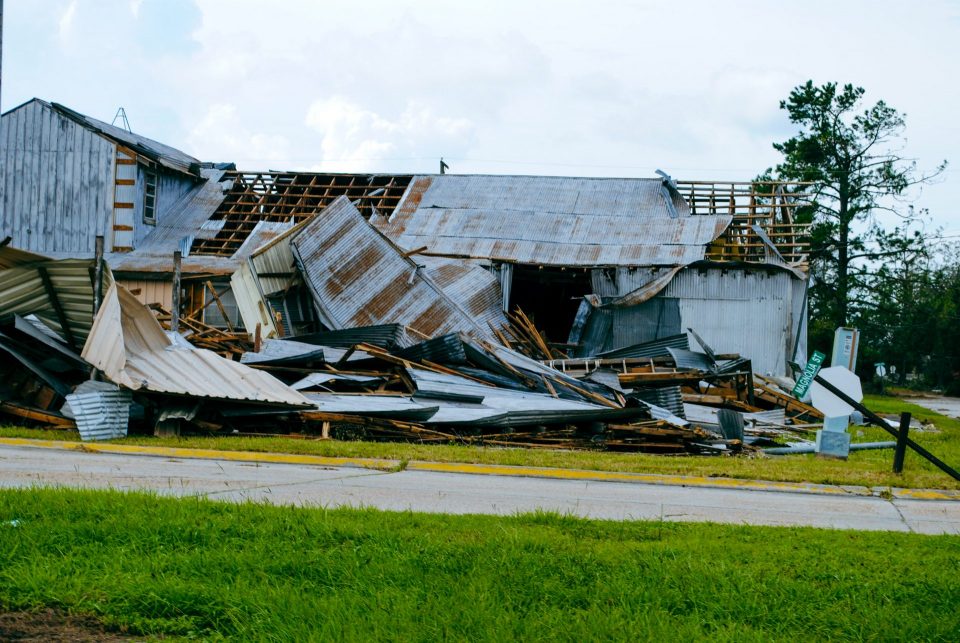Walter Tabor
February 19, 2010
T’bonne levee district inks LDWF agreement for J-2
February 23, 2010The Tri-parish area could be looking at increases in unemployment and higher taxes in 2010. Along with what sounded like an assembly line of warnings, Louisiana Association of Business and Industry (LABI) vice president Jim Patterson told a crowd last Tuesday, while the Saints Super Bowl win was a major success, it shouldn’t be considered a cure-all.
“After all, it is just a football game,” he said. Patterson warned the dreary group of onlookers his speech wouldn’t be much of a compliment – most carried bags under their eyes and a mouthful of yawns, side-effects of a weekend filled with Mardi Gras parades and Super Bowl celebrations.
“This won’t be a real uplifting kind of speech, but lets start with the good news first,” said Patterson from behind a wooden podium at South Central Industrial Association’s monthly meeting.
A positive note for business owners in the area is exemption from state sales tax placed on manufacturing machinery and equipment, which will take effect in July 2010. The Louisiana Department of Revenue (LDR) approved the initiative in 2004 with only five percent exclusion. In order for items to be considered, they “…must be machinery and equipment or other property that is eligible for depreciation for federal income tax purposes and be used as an integral part of the manufacturing of tangible personal property that is for sale,” according to a press release issued by LDR on June 28, 2004.
Locals can also look forward to reducing their electric and water bills, as the state sales tax exemption for utilities has been restored. Sales tax exemptions were suspended in 1986 but later put into effect for individuals and residences in 2002, following the passage of a bill called the “Stelly Tax Plan.”
However, businesses weren’t on the list to receive those exemptions.

For nearly three years, the legislature took small steps to appease an audience of entrepreneurs by lowering the amount of tax they had to pay on utilities. Much to their liking, the reduced tax was finally axed in 2009.

“This will bring a more balanced posture when trying to bring new business to the state,” claimed Patterson. He also said the state had recently been hailed as having a good business climate and was ranked in 2008 by Southern Business Magazine as the number one place to do business in the south.
Unfortunately, with those side notes, the vice president’s speech turned somewhat sour.
Although the entrepreneurial spirit seems to be alive and well, the number of jobs available in the state has started descending, despite months of low unemployment numbers and reduced claims for unemployment insurance.
“The situation in regards to employment has done a one-eighty, from what it was just a year or so back,” touted Patterson, pointing to a chart from his PowerPoint presentation. “There is, of course, an inverse relationship between jobs and unemployment. The job vacancy rate has declined, while unemployment has been on the rise.”
Numbers released by LABI show about 2,200 people lost their jobs last year in the Houma-Thibodaux area. In 2005, the job vacancy rate in Louisiana was 2.5 percent. It reached 6.7 percent in 2006 but plummeted to 2.1 percent in 2009, from an almost steady decrease of 1 percent over the last few years.

“We’ve got a situation that is, frankly, as those numbers suggest, not looking real, real rosy,” said the vice president. From 2006 to 2008 unemployment averaged a little over 3.5 percent, taking flight in 2009 and reaching 6.3 percent.

“I’m very, very concerned that we’re at a point in the state’s economy where our unemployment is going to become much more severe over the coming years,” said Patterson.
The rise in people seeking compensation would also trigger higher tax rates across the board. “The way our system works, in regards to unemployment claims and taxes that businesses pay; if you hit a certain point in the trust fund, it triggers higher taxes and lower benefits,” he claimed.
But the biggest wrestling match states will face this year is with finances.
“Revenues have dropped from what were historic highs. And the post-Katrina and post-Rita spending has essentially fueled a budget crisis. Rather than setting the money aside, as many suggested, the choice was to spend those revenues on a lot of different things,” reasoned Patterson. “Now, those things that are out there and are of permanent nature and need to be funded do not have the same money chasing them that they did before.”
If state spending continues to trod down the path it’s currently on, gloomy days are sure to be found and budget shortfalls will likely be a consequence, he said.
“To give you an idea about the situation and to suggest to you that we do not have a revenue problem, but rather, a spending problem; look at the way the dollars (amount of spending on things like health care and higher education) went up significantly from 2001 to 2006, a five-year period,” said Patterson.
While the number of students enrolled in public schools across the state declined by 119,296 students from 1995 to 2007, the amount of money being pumped into those institutions increased substantially by over $1 million, according to a chart presented during the presentation.
“You’ve got a budget time-bomb that’s ticking here folks, and it’s going to be in full detonation in the election year,” warned Patterson, to a fully engaged crowd.
A slew of technical, four-year and two-year colleges have sprung up across the state in recent years but many have failed to achieve high graduation rates. A six-year sample, completed in 2007-08, showed Nicholls State, McNeese State and the University of New Orleans all had rates under 50 percent.
“These graduation rates are appalling to me. I know there are a lot factors that go into weather somebody does or doesn’t graduate, but [the numbers] clearly indicate we’re doing a poor job,” said Patterson, after referring to the numbers as “damning.”
Although a solution to the states heaviest problems wasn’t clearly thrown into the arena, a few hints seemed to rise from the depths of the vice president’s speech, including cuts in the number of state jobs available and the amount of money pushed into higher education systems that seem to be falling short of expectations.
“I’m not telling you which one of these [schools] needs to go. I’m not even suggesting that. But the legislature needs to take a hard look at these schools – what they’re doing, how they’re doing it – and decide weather or not we need to keep all of them,” he said. “But we can’t support [this number of institutions] in good economic times and we definitely can’t support it now.”
With upcoming elections in the House and Senate, officials can now play a critical role in patching holes created by past delegations.
“You can have your committee and you can come up with your ideas, but brainpower in the committee won’t solve [the problems] the way guts will. And that’s what it’s going to take: guts,” touted Patterson.
Jim Patterson (left), vice president of LABI, talks with Jane Arnette, executive director of South Central Industrial Association, after a presentation about Louisiana’s chances at high unemployment. * Photo by MICHAEL DAVIS






